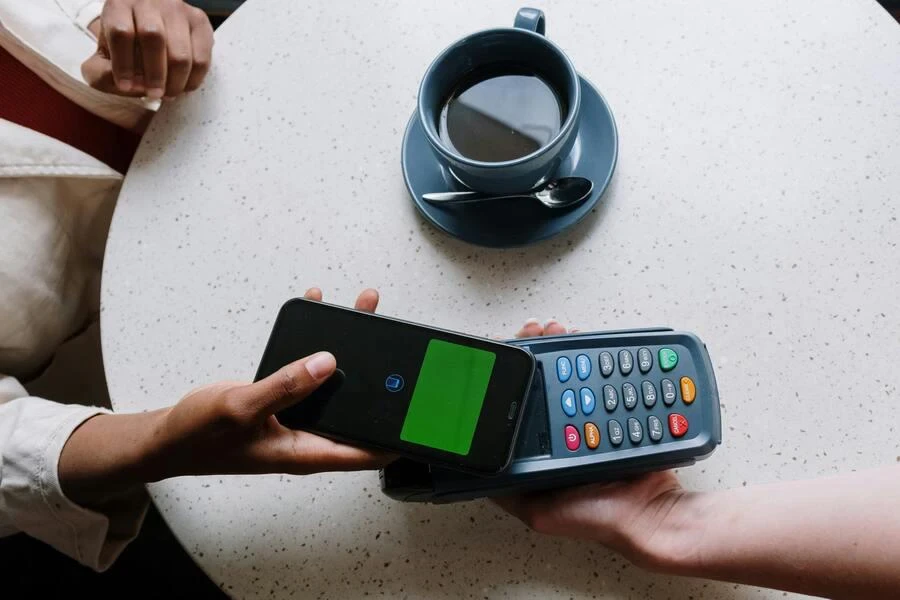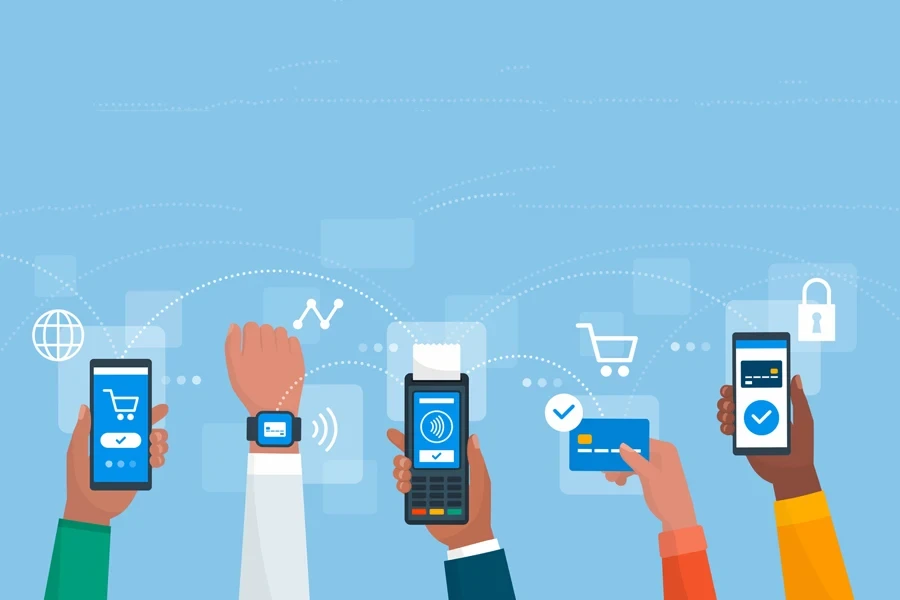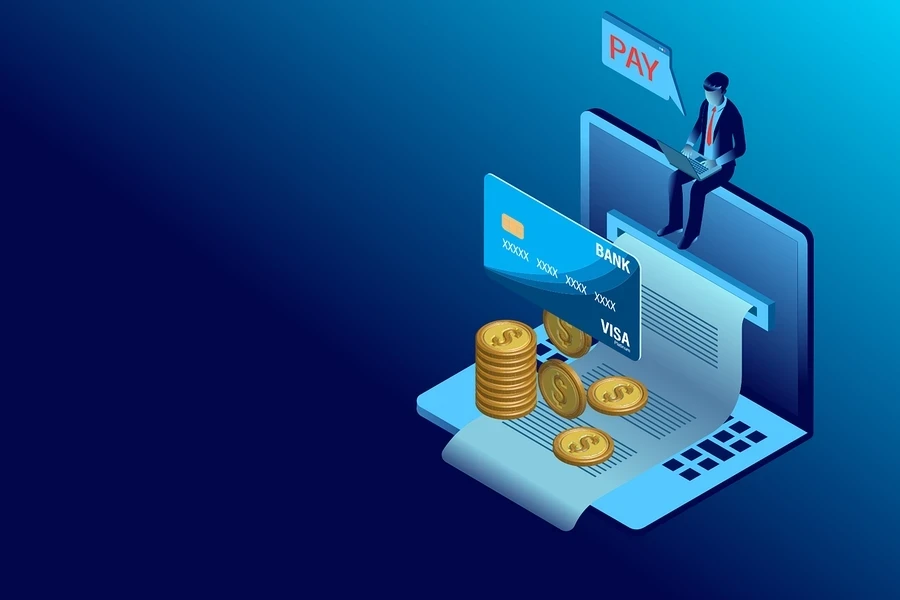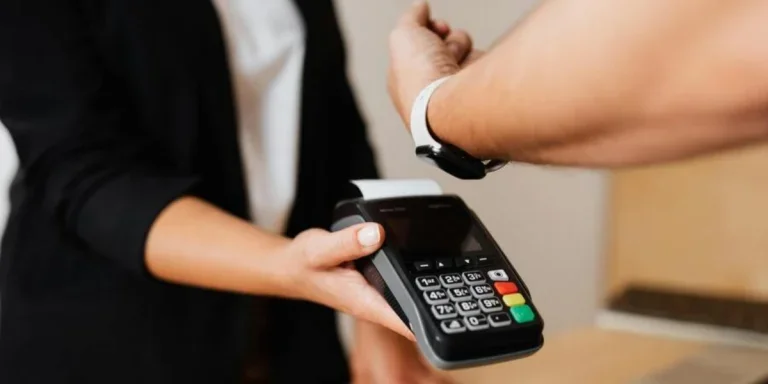Global shopping behaviors have taken a dramatic turn over the past few years, with one such evolution being the interesting developments that have arisen via payment technology. The desire for fast, transparent, and convenient payment has led to innovations like near field communication (NFC) mobile payments – contactless digital payments that allow users to make purchases using their smart devices.
In this article, we’ll cover the essentials of what you need to know about this tech and its benefits for businesses.
Table of Contents
1 What is NFC mobile payment technology?
2 How does NFC technology work?
3 Pros and cons of NFC transactions
4 How merchants can embed NFC mobile payment systems
5 Verdict
What is NFC mobile payment technology?

NFC mobile payments are all about speed, security, and convenience. Instead of fumbling with cash or swiping a card, customers can now pay with just a tap using their smartphone. This technology is powered by near field communication or NFC technology. It allows two devices to exchange payment data securely when touched together.
Businesses and shoppers love NFC payments because it’s:
- Fast and seamless: No more waiting, just tap and go
- Secure and reliable: Encrypted transactions keep your data safe
- Universal and flexible: Works with payment apps, digital wallets, and UPI
No swiping, no inserting. Just tap and you’re done!
How does NFC technology work?

NFC technology evolved from RFID (radio-frequency identification) and has been around since the early 2000s. It uses a specific frequency (13.56 MHz) based on the ISO/IEC 14443 standard to enable short-range, contactless communication within a few centimeters. Over the years, NFC has revolutionized the way we pay, making transactions as easy as hovering your phone over a payment terminal.
Unlike traditional RFID, which typically only allows one-way communication over longer distances, NFC enables secure two-way communication. This allows both the device and terminal to send and receive payment information. Once the reader detects a payment device nearby, it starts to communicate data.
Compared to other payment methods, NFC mobile payments are incredibly secure due to their encrypted transmissions. This technology is built into a variety of devices, including smartphones, smartwatches, tablets, and even some laptops. In short, devices that can run mobile wallet apps like Apple Pay, Google Pay, and Samsung Pay are likely to have NFC compatibility.
Here’s a step-by-step illustration of how it works:
- Tap to pay: Your device’s NFC chip sends encrypted payment information to the POS terminal
- Instant processing: The POS system reads the data and deducts the amount from your bank account in seconds
- Secure authorization: Payments require multi-factor authentication, like a fingerprint, face ID, or passcode
On the vendor’s side, the POS terminal must be equipped with NFC-compatible hardware and updated firmware to support mobile payments.
Integration often requires coordination with payment processors and software updates to ensure secure data handling. The entire process is designed to be quick and ultra-secure, providing a smooth checkout experience for both customers and businesses.
Pros and cons of NFC transactions

The NFC payments market was valued at approximately USD 35.89 billion in 2024 and is projected to grow to USD 38.20 billion this year, reaching USD 66.87 billion by 2034 at a compound annual growth rate (CAGR) of 6.4%.
The following are the main reasons for growth in this sector:
Secure
NFC mobile payments deploy end-to-end encryption, and given that the two devices are placed close together, there’s little chance that the information can be stolen. NFC is arguably even more secure than magnetic stripe payments because users must first unlock their smart or wireless devices to access it.
Tap-to-tap payment cards also use the same technology as cards with EMV chips. This means that every contactless transaction generates a code that prevents skimming and fraud.
Quick processing
According to an Amex report, 54% of people prefer contactless payments because they offer a faster and more convenient way to pay. With NFC mobile payments, the process is instant. Customers simply unlock their phone using a fingerprint, face scan, or passcode and complete their purchase without the need to enter a PIN number.
Enhances customer loyalty
Loyalty programs, discounts, and memberships can seamlessly sync with NFC payments, helping customers save money and earn rewards each time they pay.
No branded app? No problem! Many banks and mobile wallets already offer discounts and reward points, providing rewards without any extra issues or hassle.
Learning curve and hesitancy
While NFC mobile payment methods are becoming more popular, there are still some individuals who view this new technology with suspicion. Older shoppers, for example, may still be hesitant about contactless payments. Since they’ve spent most of their lives using cash for in-person transactions, they might see NFC payments as a potential risk. Therefore, concerns about security features and a lack of familiarity with the technology can make them reluctant to share information or switch to digital payment methods.
Potential security threats
NFC payments are convenient, but there are some risks. Similarly to if a credit card is stolen and used to make small purchases without entering a PIN, the same goes for mobile wallets – if someone steals a phone, they might try to access the card details. However, most wallets use multi-factor authentication (MFA), like fingerprints or face scans, to prevent unauthorized payments.
Hackers have also been known to find weaknesses in wearable devices, phones, or POS terminals to steal customer data. Strong security features and ongoing support from banks and businesses help reduce these risks.
How merchants can embed NFC mobile payment systems

The right equipment is the primary requirement to set up an NFC mobile payment system. NFC mobile payments and other contactless options work with various devices, including tap-to-pay cards, chip readers, card swipers, and smart monitors.
Before switching to contactless payments, businesses must choose the right system for their particular situation. With so many POS technologies available, the best option will depend on factors like business size, customer preferences, and daily operations.
For example, a coffee shop will need a different setup than a small clothing store. That’s why it’s essential to talk to your merchant account provider. They can help companies pick the right payment terminal and ensure it runs smoothly.
Verdict

Contactless payments have become the new standard when it comes to in-person transactions. And as more customers see how fast, easy, and secure NFC payments are, their popularity is only bound to grow.
For businesses, offering tap-to-pay isn’t just about convenience. It’s also about safety and hygiene in a post-COVID world, reducing the need for physical contact with payment terminals.
To stay ahead, companies must keep up with technology, as outdated payment systems can lead to frustration as well as pose security risks. Upgrading to contactless payments is a simple step that brings notable benefits for both businesses and their prospects.




